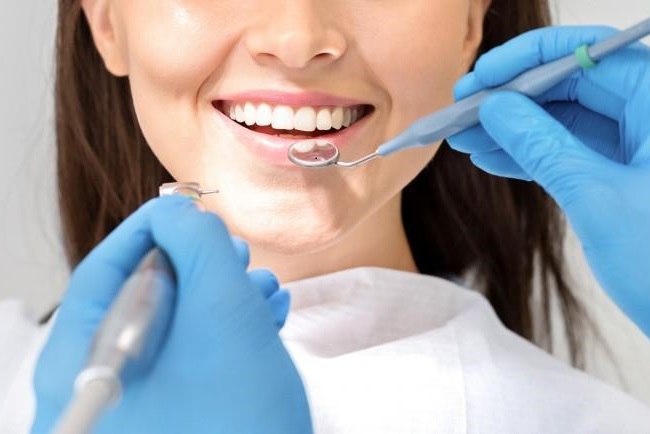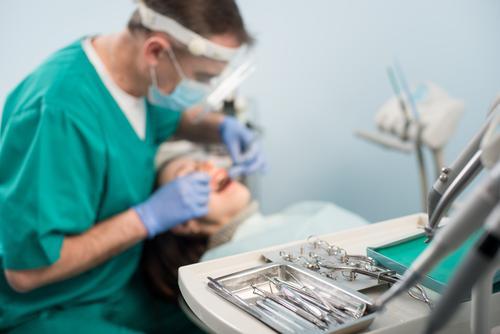
Dry socket is a potential complication after you’ve had a tooth extraction. It’s a temporary but painful condition that usually needs to be treated by your dentist. It’s possible to prevent dry socket from occurring, however, making your recovery from the extraction quicker and easier.
At Arya Dental in Fullerton, California, Saeed Mokhayeri DDS and Hengameh Safarcherati DDS provide a wide range of dental services, including tooth extraction. Because many people aren’t aware of the dry socket complication or how to prevent it from happening, the team has put together this guide to get you in the know.
Dry socket basics
Our team tries to restore broken or damaged teeth rather than pulling them out, but extraction may be necessary for a variety of reasons. Maybe you were in an accident and lost part of the tooth. Or you have an infection that’s spread to the tooth, and you’re in extreme pain, the kind that only pulling the tooth can resolve.
It’s possible that your wisdom teeth are impacted, are damaging your other teeth, or are causing a crowding problem. Or maybe it’s just too expensive to restore a badly damaged tooth. Whatever the reason, if pulling your tooth is the best option, we aim to do it as quickly and as painlessly as possible.
After our team removes a tooth, a blood clot should form in your gums where the tooth was. The clot serves an important purpose — protecting the underlying bone, tissues, and nerves as the area heals.
If the blood clot doesn’t form, or if the clot becomes dislodged, it leaves the bone and nerves exposed, creating a great deal of pain and other symptoms. This is called dry socket, medically known as alveolar osteitis.
Symptoms of dry socket
The symptoms of dry socket vary from one person to the next but include:
- Severe pain at the extraction site
- A missing blood clot and visible bone at the extraction site
- Foul-smelling breath
- A bad taste in the mouth
- Pain that radiates from the tooth socket to your neck, ear, eye, or temple on the same side
You can expect a certain amount of pain after an extraction, but severe or worsening pain, especially pain that radiates, isn’t normal. Call our team as soon as you suspect dry socket so he can clean and protect the area so it heals properly.
6 tips to prevent dry socket
There are six steps you can take at home to prevent dry socket from occurring:
- Don’t smoke or use tobacco products
- Avoid chewing hard foods for a few days; stick to soft foods like yogurt, gelatine, broth, and applesauce
- Drink plenty of clear liquids to remain hydrated, but skip the carbonated beverages
- Don’t drink with a straw — this can dislodge the dressing and clot
- Rinse gently with warm salt water several times each day
- When brushing your teeth around the extraction site, brush slowly and gently to prevent dislodging the clot
Our team gives you aftercare instructions when you’ve had a tooth pulled, but it’s up to you to prevent dry socket from happening once you leave the office.
If you’d like more information on dry socket, or if you’re in need of dental services, contact Arya Dental by calling or texting us, or you can schedule an appointment online today.
FAQs: Preventing Dry Socket After Tooth Extraction
1. What is a dry socket?
A dry socket, or alveolar osteitis, occurs when the blood clot that normally forms after a tooth extraction is dislodged or fails to develop. This exposes the bone and nerves in the empty socket, leading to significant pain, delayed healing, and possible infection.
2. When does a dry socket usually develop?
Dry socket typically appears two to three days after extraction. Patients may experience throbbing pain radiating to the ear, foul odor, or a visible empty socket. If you notice these symptoms, contact Arya Dental immediately for treatment.
3. What causes dry socket?
The most common causes are smoking, using straws, vigorous rinsing, or poor oral hygiene soon after extraction. These actions can dislodge the protective clot that covers the bone, exposing it to air and bacteria.
4. Who is at higher risk for dry socket?
Smokers, women taking birth control pills, people with a history of dry sockets, and patients who’ve had difficult or surgical extractions (such as wisdom teeth) are more prone to developing this condition.
5. How can I prevent dry socket after a tooth extraction?
Follow your dentist’s aftercare instructions carefully. Avoid smoking or vaping, do not drink through a straw, eat soft foods, stay hydrated, rinse gently with warm salt water, and brush around the site carefully for several days.
6. What foods are safe to eat after an extraction?
Choose soft, easy-to-chew foods like yogurt, pudding, applesauce, smoothies (without a straw), mashed potatoes, or soup broth. Avoid crunchy, spicy, or hot foods that may irritate the area or loosen the clot.
7. How long should I avoid smoking or using a straw?
Ideally, refrain from smoking for at least 72 hours and avoid straws for one full week after extraction. Suction and heat from smoke can easily disturb healing and greatly increase your risk of dry socket.
8. Can I rinse my mouth after extraction?
Yes—but be gentle. Wait 24 hours after surgery before rinsing. Use warm salt water several times a day, especially after meals, to keep the area clean without disturbing the clot.
9. What should I do if I think I have a dry socket?
If you experience severe pain, an unpleasant taste, or visible bone in the socket, contact Arya Dental immediately. The dentist can clean the area and apply a soothing dressing to promote faster healing.
10. How can Arya Dental help with recovery?
The dental team at Arya Dental provides personalized post-extraction care and guidance to ensure a smooth recovery. If a dry socket occurs, they offer prompt, gentle treatment to relieve discomfort and restore healing.






